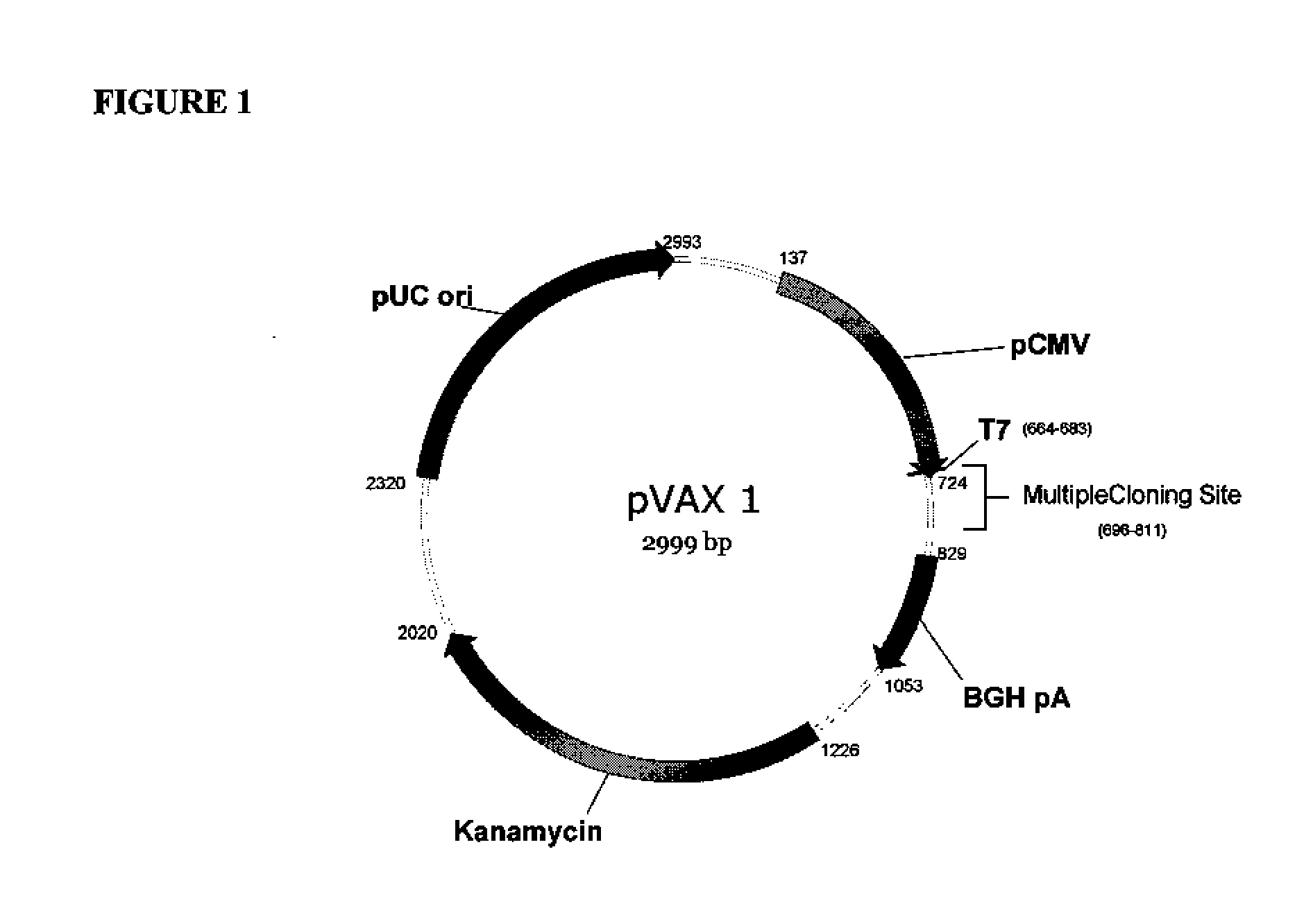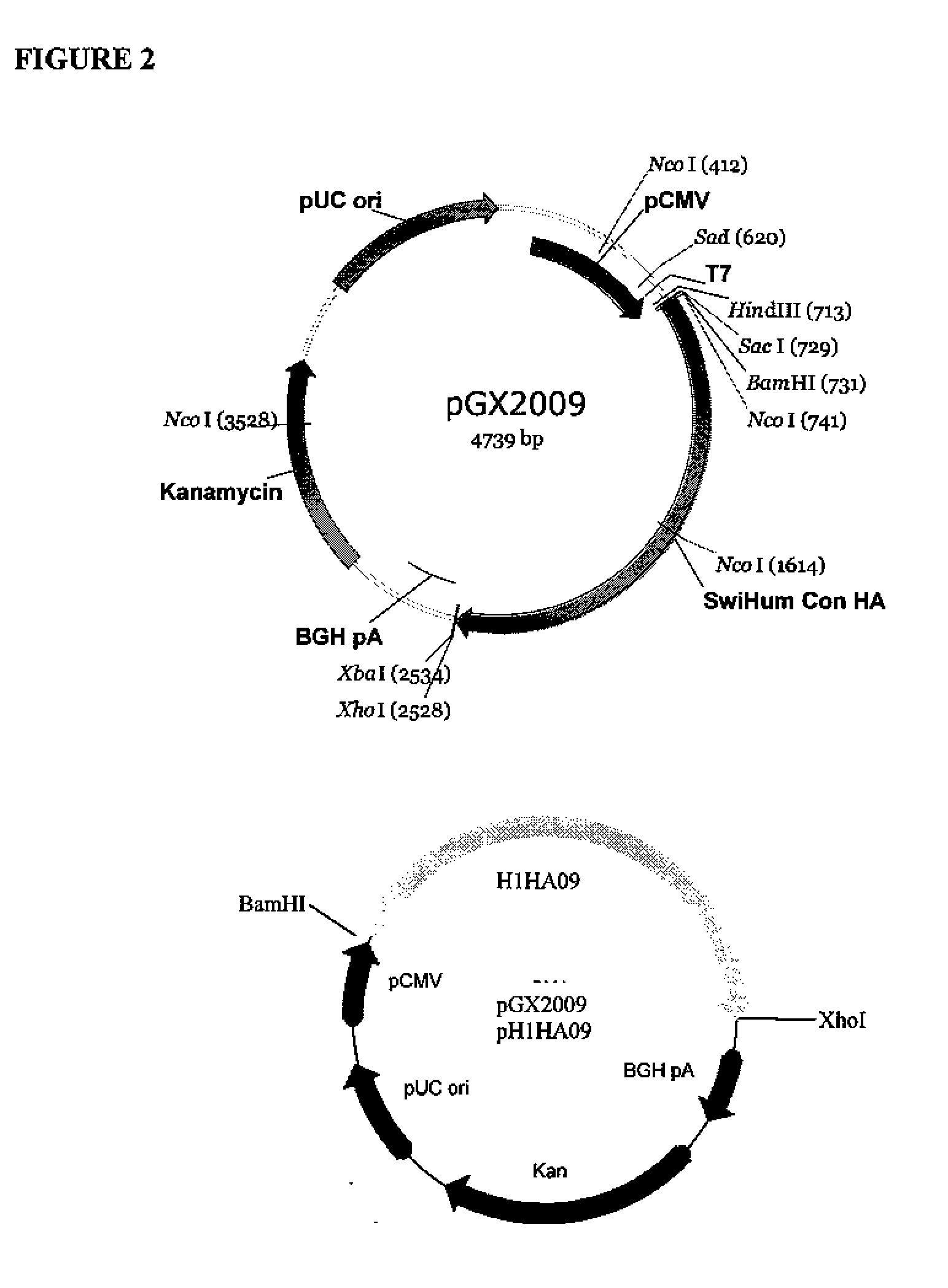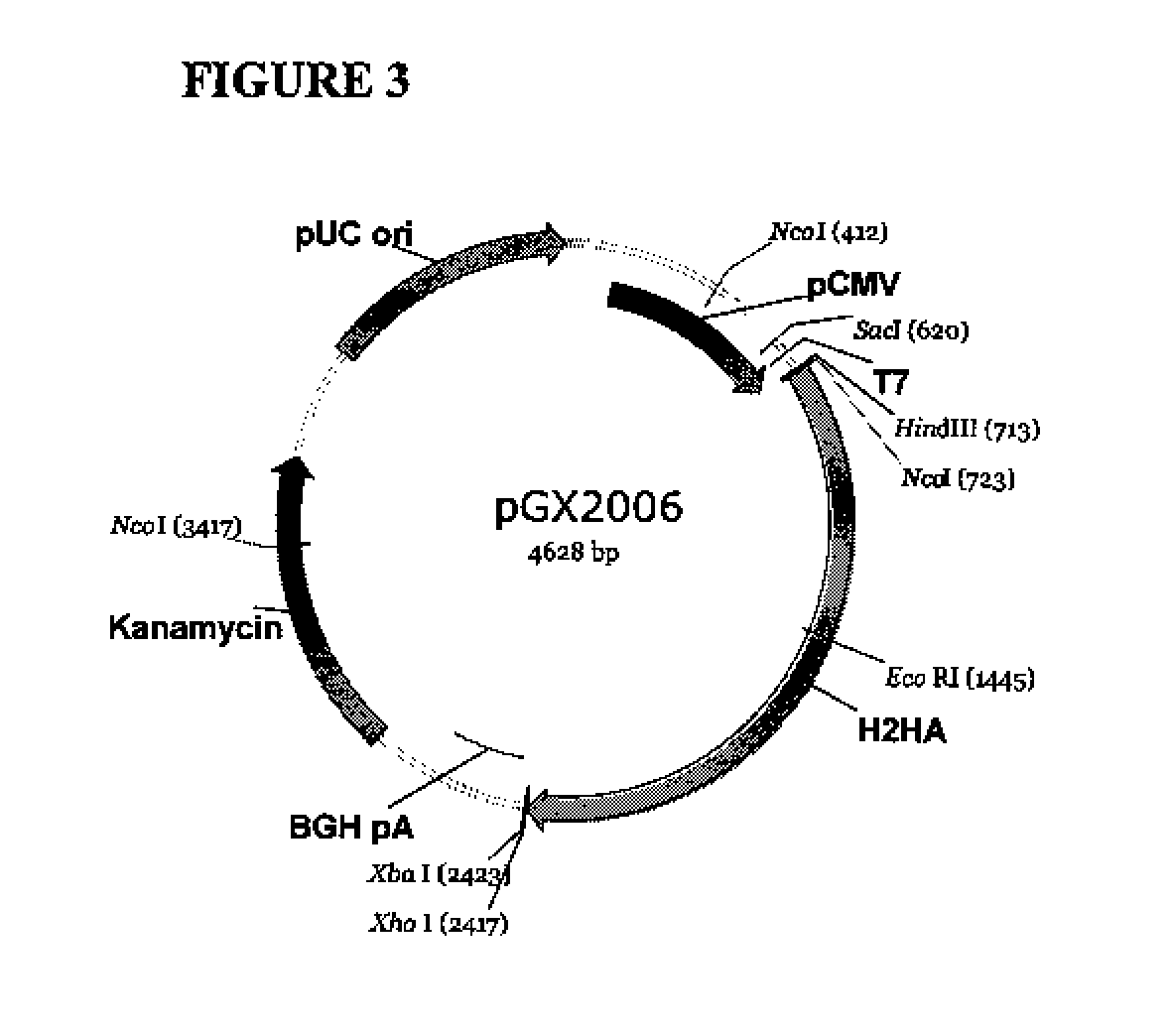Influenza nucleic acid molecules and vaccines made therefrom
a technology of nucleic acid molecules and vaccines, applied in the field of improved influenza viral vaccines, can solve the problems of large animal deaths, monetary losses, and millions of deaths annually
- Summary
- Abstract
- Description
- Claims
- Application Information
AI Technical Summary
Benefits of technology
Problems solved by technology
Method used
Image
Examples
example 1
[0155]pGX2009 (pH1HA09)—Plasmid Encoding 2009 H1N1 Influenza (Swine Flu) Hemagglutinin Antigen
[0156]The backbone of pGX2009 (H1HA09) is the modified expression vector pVAX1 (Invitrogen, Carlsbad, Calif.) under the control of the cytomegalovirus immediate-early (CMV) promoter. The original pVAX1 was purchased from Invitrogen (Catalog number V260-20) and maintained at −20° C. As noted above, sequence analysis revealed differences between the sequence of pVAX1 used as the backbone of pGX2009 and the pVAX1 sequence available from Invitrogen. The differences are set forth above.
[0157]Plasmid pGX2009, also referred to as pH1HA09, comprises a nucleic acid sequence that encodes a consensus 2009 H1N1 influenza (swine flu) hemagglutinin molecule. The 79 primary sequences used to generate the consensus sequence were selected from The Influenza Sequence Database.
[0158]The accession numbers for nucleotide sequences encoding the amino acid sequence for the various influenza A hemagglutinin H1 pro...
example 2
[0160]Challenge of Influenza pGX2009 immunized Ferrets with A / Mexico / InDRE4487 / 2009
[0161]Challenge experiments were carried out using ferrets, a preferred model for influenza. The ferrets were immunized using plasmid pGX2009.
[0162]Animals: 4 groups×5 animals / group, plus one control group with 4 animals=24 ferrets total (male)
[0163]Duration: 18 weeks (including challenge)
[0165]Protocol Summary Ferrets were allocated randomly into DNA vaccine groups. Animals were immunized at Study Day 0, Day 28, and Day 56. Animals were anesthetized with ketamine / midazolam cocktail, isoflurane or equivalent according to approved anesthesia protocols and vaccinated IM with influenza DNA vaccine combinations. Groups 1 and 2 were immediately electroporated using CELLECTRA® adaptive constant current electroporation (EP) device at 0.5 Amp, 52 millisecond pulses, 0.2 sec between pulses, 4 sec firing delay, 3 total pulses. Control animals were naïve controls (no plasmid, no EP). Fe...
PUM
| Property | Measurement | Unit |
|---|---|---|
| Tm | aaaaa | aaaaa |
| temperature | aaaaa | aaaaa |
| temperature | aaaaa | aaaaa |
Abstract
Description
Claims
Application Information
 Login to View More
Login to View More - R&D
- Intellectual Property
- Life Sciences
- Materials
- Tech Scout
- Unparalleled Data Quality
- Higher Quality Content
- 60% Fewer Hallucinations
Browse by: Latest US Patents, China's latest patents, Technical Efficacy Thesaurus, Application Domain, Technology Topic, Popular Technical Reports.
© 2025 PatSnap. All rights reserved.Legal|Privacy policy|Modern Slavery Act Transparency Statement|Sitemap|About US| Contact US: help@patsnap.com



